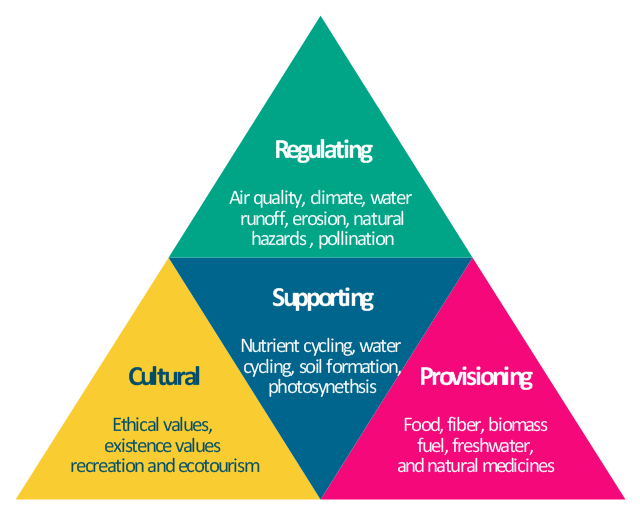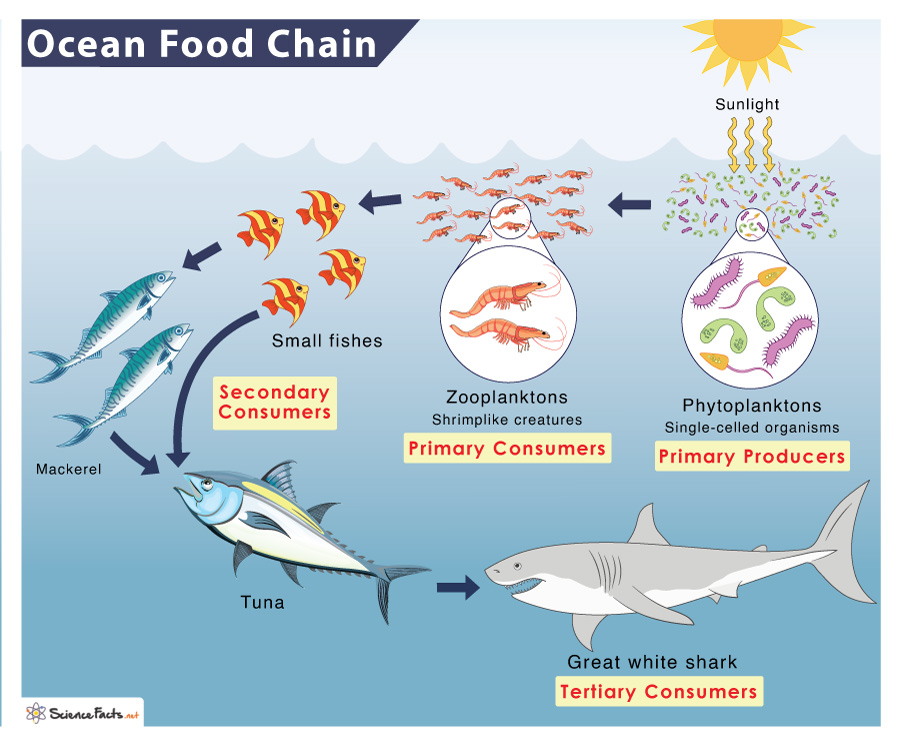Topic ecosystems in forests: Explore the vibrant tapestry of "Ecosystems in Forests," where each thread weaves a story of interconnectivity, biodiversity, and conservation, igniting curiosity and a deeper appreciation for our planet"s green lungs.
Table of Content
- What are the key components that make up a forest ecosystem?
- Types of Forest Ecosystems
- Climate and Biodiversity in Forest Ecosystems
- Role of Forests in Climate Regulation
- Forest Ecosystem Services
- Conservation and Sustainable Management of Forests
- Impact of Climate Change on Forest Ecosystems
- YOUTUBE: Understanding Forest Ecosystems
- Forest Ecosystem Restoration
- Human Interaction with Forest Ecosystems
- Challenges Facing Forest Ecosystems
- Future of Forest Ecosystems
What are the key components that make up a forest ecosystem?
A forest ecosystem is made up of various key components that work together to create a thriving and complex environment. The key components that make up a forest ecosystem are:
- Trees: The dominant organisms in a forest ecosystem, trees provide shelter, food, and habitat for a wide range of organisms.
- Plants: Besides trees, there is a diverse variety of plants, including shrubs, herbs, mosses, and ferns that contribute to the overall biodiversity of the forest ecosystem. These plants play a crucial role in providing food, oxygen, and habitat for numerous animals and insects.
- Animals: Forest ecosystems are home to a wide array of animal species, ranging from mammals, birds, reptiles, and amphibians to insects and invertebrates. These animals have adapted to the forest habitat and play critical roles in pollination, seed dispersal, and maintaining the balance of the ecosystem.
- Microorganisms: Forest ecosystems are teeming with microorganisms such as bacteria, fungi, and protists. These microorganisms are involved in nutrient recycling, decomposition, and symbiotic relationships with other organisms.
- Soil: The soil in a forest ecosystem is a vital component that supports the growth of trees and plants. It provides nutrients, water, and anchorage to the roots, and serves as a habitat for various organisms.
- Water: Forest ecosystems rely on water, either through rainfall or nearby water bodies, to sustain the plants, animals, and microorganisms within the ecosystem. Water also plays a crucial role in regulating the temperature and humidity of the forest.
- Climate: The climate of a region heavily influences the type of forest ecosystem that develops. Factors like temperature, precipitation, and sunlight availability determine the species composition and overall functioning of the forest ecosystem.
These key components interact and depend on each other in a forest ecosystem, creating a delicate balance that allows for the survival and coexistence of numerous species.
READ MORE:
Types of Forest Ecosystems
Forest ecosystems are diverse, varying widely across the globe based on climate, geography, and biodiversity. Understanding the types of forest ecosystems is essential for appreciating the complexity and importance of forests in maintaining ecological balance and supporting life.
- Tropical Rainforests: Located near the equator, these forests are known for high biodiversity, dense canopies, and year-round warm temperatures. They receive abundant rainfall and house a vast array of plant and animal species.
- Temperate Forests: Found in both hemispheres at temperate latitudes, these forests experience four distinct seasons. They can be further divided into deciduous forests, with trees that shed their leaves annually, and evergreen coniferous forests.
- Boreal Forests (Taiga): Occupying subarctic regions, boreal forests are characterized by cold climates and long winters. Dominated by coniferous trees, they cover vast areas in North America and Eurasia.
- Cloud Forests: These are mountainous tropical forests that are often enveloped in a persistent, cloud-like mist. They are renowned for their unique plant species, including orchids and bromeliads, adapted to capture moisture from the air.
- Mediterranean Forests: Occurring in Mediterranean climate zones, these forests are adapted to dry summers and wet winters. They are home to a variety of shrubs, herbs, and trees adapted to fire and drought conditions.
Each type of forest ecosystem plays a crucial role in carbon sequestration, climate regulation, and providing habitat for countless species, highlighting the importance of conservation and sustainable management practices.

Climate and Biodiversity in Forest Ecosystems
The climate and biodiversity of forest ecosystems are intricately linked, each influencing the other in a complex dance of ecological interactions. The climate determines not only the type of forest ecosystem that can thrive in a particular region but also the diversity of life forms it can support. Conversely, the biodiversity within these ecosystems can affect local and global climate patterns through processes such as carbon sequestration and evapotranspiration.
- Impact of Climate: The climate in forest ecosystems varies from the constant warmth and humidity of tropical rainforests to the cold, dry conditions of boreal forests. Each climate supports a unique mix of flora and fauna, adapted to local conditions.
- Biodiversity: Forest ecosystems are among the most biodiverse on the planet. Tropical rainforests, for example, may contain over half of the world"s species within a fraction of the earth"s surface area. This biodiversity includes a wide range of plants, animals, fungi, and microorganisms.
- Climate Regulation: Through the process of photosynthesis, forests play a critical role in carbon capture, helping to regulate the global climate. They also influence local climates by moderating temperatures and increasing humidity levels through transpiration.
- Threats to Forest Ecosystems: Climate change poses significant threats to forest ecosystems, including altering rainfall patterns, increasing the frequency of wildfires, and introducing new pests and diseases. These changes can disrupt the delicate balance of these ecosystems, affecting their biodiversity and capacity to regulate climate.
Understanding the relationship between climate and biodiversity in forest ecosystems is essential for their conservation and management, ensuring these natural treasures continue to support life on earth for generations to come.
Role of Forests in Climate Regulation
Forests play a pivotal role in regulating the Earth"s climate, acting as the lungs of our planet. They absorb carbon dioxide (CO2), a major greenhouse gas, during photosynthesis, thereby reducing the amount of CO2 in the atmosphere and mitigating the effects of climate change. This section explores the multifaceted ways in which forests contribute to climate regulation and the overall health of our planet.
- Carbon Sequestration: Forests are significant carbon sinks, storing carbon both in the biomass of trees and in the soil. This process of carbon sequestration is crucial in reducing the global concentration of CO2.
- Temperature Regulation: Through the process of evapotranspiration, forests release water vapor into the atmosphere, which helps to cool the air and regulate local and global temperatures.
- Weather Patterns: Large forested areas, such as the Amazon rainforest, can influence regional weather patterns, including rainfall distribution, due to their impact on atmospheric conditions.
- Protecting Biodiversity: By maintaining a stable climate, forests help protect the habitats of countless species, supporting biodiversity which is vital for ecosystem resilience.
- Reducing Soil Erosion: Forests prevent soil erosion by stabilizing the soil with their root systems. This not only preserves soil quality but also prevents sediments from affecting waterways and disrupting aquatic ecosystems.
The role of forests in climate regulation cannot be overstated. Protecting and restoring forests is key to combating climate change, preserving biodiversity, and ensuring a stable and healthy environment for future generations.
:max_bytes(150000):strip_icc()/497408077-56af61ff3df78cf772c3c309.jpg)
Forest Ecosystem Services
Forests provide a wide array of ecosystem services that are crucial for human well-being, environmental health, and economic prosperity. These services encompass supporting, provisioning, regulating, and cultural benefits that forests offer to life on Earth. Understanding these services highlights the invaluable role forests play in our lives and underscores the importance of their conservation.
- Supporting Services: Forests contribute to biodiversity maintenance, soil formation and preservation, and the cycling of nutrients, all of which support life by creating and maintaining the ecosystems.
- Provisioning Services: They offer a variety of resources including timber, food, medicinal plants, and fresh water, supporting the livelihoods of billions of people globally.
- Regulating Services: Forests regulate climate, water cycles, and air quality. They act as carbon sinks, reduce soil erosion, and mitigate natural hazards such as floods and landslides.
- Cultural Services: Forests are a source of spiritual enrichment, cognitive development, recreation, and aesthetic experiences. They have been an integral part of many cultures and traditions around the world.
The preservation and sustainable management of forest ecosystems are vital to ensure the continuation of these services. Efforts towards reforestation, afforestation, and conservation practices are essential in maintaining the balance and health of our planet"s forests.
Conservation and Sustainable Management of Forests
The conservation and sustainable management of forests are critical to preserving biodiversity, mitigating climate change, and ensuring ecosystem services for future generations. Implementing effective strategies and practices can help maintain forest health, productivity, and diversity. Here are key approaches to achieving sustainable forest management and conservation.
- Protected Areas: Establishing and enforcing protected areas to conserve biodiversity and prevent deforestation. This includes national parks, wildlife reserves, and conservation areas.
- Sustainable Harvesting Practices: Implementing controlled logging practices that allow for regeneration and prevent overexploitation of forest resources. Techniques include selective logging, reduced-impact logging, and clear-cutting minimization.
- Reforestation and Afforestation: Encouraging the planting of trees to restore deforested areas and to expand forest cover. This not only helps in carbon sequestration but also in restoring habitat for wildlife.
- Community Management: Involving local communities in forest management decisions and practices, recognizing their dependence on forests for livelihoods and cultural significance. Community forestry initiatives can empower locals while promoting conservation.
- Ecosystem-Based Management: Managing forests in a way that maintains their natural ecosystem functions and services. This approach considers the forest in a holistic manner, integrating biodiversity conservation with human livelihoods.
- Policy and Legislation: Developing and enforcing laws and policies that promote forest conservation and sustainable management. This includes regulations on land use, trade in timber and forest products, and incentives for conservation efforts.
By adopting these strategies, we can ensure the health and longevity of forest ecosystems worldwide, preserving their invaluable contributions to the environment, economy, and society.

Impact of Climate Change on Forest Ecosystems
Climate change poses significant challenges to forest ecosystems globally, affecting their health, distribution, and the services they provide. The impacts are complex and vary across different forest types and regions. Understanding these effects is crucial for developing adaptive management strategies to mitigate and adapt to climate change.
- Altered Species Distribution: Rising temperatures and shifting precipitation patterns can lead to changes in the distribution of tree species, with some species moving toward higher altitudes or latitudes in search of suitable climate conditions.
- Increased Pest Outbreaks: Warmer climates can enhance the survival and reproduction rates of many forest pests, leading to more frequent and severe outbreaks that can significantly damage forests.
- Enhanced Fire Regimes: Climate change contributes to drier conditions and increased lightning activity, elevating the risk and intensity of wildfires, which can alter forest landscapes and ecosystems.
- Reduced Forest Productivity: Extreme weather events, such as droughts and heatwaves, can stress forest ecosystems, reducing their growth and productivity and affecting biodiversity.
- Changes in Carbon Sequestration: While forests act as carbon sinks, their capacity to absorb CO2 can be compromised by climate change, potentially turning them into carbon sources if they are severely impacted.
Addressing the impact of climate change on forest ecosystems requires concerted global effort in research, monitoring, conservation, and the implementation of adaptive management practices to enhance forest resilience and sustainability.
Understanding Forest Ecosystems
\"Discover the wonders of biodiversity in this captivating video! Immerse yourself in the beauty of different species and ecosystems, as we explore the importance of protecting our planet\'s incredible biodiversity. Get ready to be inspired and amazed!\"
Temperate Forest Ecosystems
\"Calling all climate enthusiasts! Join us in this enlightening video as we delve into the complexities of climate change. Gain a deeper understanding of the impact it has on our world, and find out how we can collectively work towards building a sustainable future. Don\'t miss out on this engaging discussion!\"
Forest Ecosystem Restoration
Forest ecosystem restoration is a critical and increasingly prioritized global effort aimed at reversing the degradation of forests and enhancing the benefits they provide to both the environment and humanity. Effective restoration practices not only recover forest cover but also restore the ecological integrity and resilience of forest ecosystems. Here are key strategies and approaches involved in forest ecosystem restoration.
- Reforestation: Planting trees in areas where forests have been cut down or degraded to restore forest cover and ecosystem functions.
- Afforestation: Establishing forests on lands that historically have not contained forests within modern times, increasing biodiversity, and expanding carbon sinks.
- Natural Regeneration: Facilitating the natural recovery of forests by protecting areas from further degradation and allowing native vegetation to recover on its own.
- Agroforestry: Integrating trees and shrubs into agricultural landscapes to enhance biodiversity, improve soil health, and increase crop yields while providing ecosystem services.
- Ecosystem-Based Management: Managing restored areas in a way that maintains their natural ecosystem processes and resilience, ensuring that restoration efforts are sustainable over the long term.
- Community Involvement: Engaging local communities in restoration projects to ensure that restoration efforts are aligned with local needs and knowledge, enhancing the success and sustainability of restoration efforts.
Forest ecosystem restoration requires careful planning, long-term commitment, and collaboration among governments, NGOs, the private sector, and local communities to ensure that restored forests thrive and provide their full range of ecosystem services.
:max_bytes(150000):strip_icc()/489034241_5-56af62885f9b58b7d0183204.jpg)
Human Interaction with Forest Ecosystems
Human interaction with forest ecosystems has been profound and multifaceted, shaping landscapes and influencing biodiversity across the globe. These interactions range from conservation and sustainable management practices to activities that contribute to forest degradation. Understanding these dynamics is crucial for balancing human needs with the health and sustainability of forest ecosystems.
- Conservation Efforts: Initiatives such as protected area designation, community-managed forests, and conservation programs aim to preserve forest biodiversity and ecosystem services.
- Sustainable Use: Sustainable forestry practices, including selective logging, certification schemes, and eco-tourism, seek to ensure that forest resources can be utilized without compromising their long-term health.
- Restoration Activities: Efforts to restore degraded forest lands through reforestation, afforestation, and ecosystem rehabilitation work towards recovering lost ecosystems and their functions.
- Agricultural Expansion: The conversion of forest lands to agriculture is a major driver of deforestation, affecting biodiversity and carbon sequestration capacities.
- Urbanization: Expansion of urban areas into forest lands leads to habitat fragmentation and loss, impacting wildlife and ecosystem services.
- Climate Change Mitigation: Forests play a key role in climate change mitigation strategies, with efforts focused on reducing deforestation and enhancing forest carbon stocks.
The relationship between humans and forests is evolving, with increased recognition of the need for sustainable interaction that ensures the conservation of these vital ecosystems for future generations.
Challenges Facing Forest Ecosystems
Forest ecosystems around the world are under increasing pressure from a variety of challenges that threaten their health, biodiversity, and the services they provide. Addressing these challenges is critical for the preservation of forest ecosystems and the overall well-being of our planet. Here are some of the key challenges facing forest ecosystems today.
- Deforestation: Driven by agricultural expansion, logging, and infrastructure development, deforestation leads to loss of habitat, biodiversity, and contributes to global climate change.
- Climate Change: Altered precipitation patterns, increased temperatures, and extreme weather events can stress forest ecosystems, affecting species distribution and forest health.
- Invasive Species: Non-native species can outcompete native flora and fauna, disrupt ecosystem functions, and lead to loss of biodiversity.
- Pollution: Air and water pollution, including acid rain and chemical runoff from agriculture and industry, can degrade forest ecosystems and affect the health of wildlife and plants.
- Forest Fragmentation: Habitat fragmentation, due to urbanization and infrastructure development, isolates populations of species, affecting their genetic diversity and survival.
- Overexploitation: Unsustainable logging, hunting, and gathering can deplete resources, leading to long-term declines in forest quality and biodiversity.
- Disease and Pests: Climate change and human activity can introduce and spread diseases and pests that can devastate forests and tree populations.
Combating these challenges requires a global effort involving conservation, sustainable management practices, and policies that support the resilience and recovery of forest ecosystems.

READ MORE:
Future of Forest Ecosystems
The future of forest ecosystems hinges on the actions taken today to address the challenges they face and to implement sustainable management and conservation strategies. With increasing awareness of the importance of forests for biodiversity, climate regulation, and human well-being, there is a growing momentum towards preserving these vital natural resources. Here are several key factors that will shape the future of forest ecosystems.
- Conservation Initiatives: Expanding protected areas and strengthening conservation policies are essential for preserving forest biodiversity and ecosystem services.
- Climate Change Mitigation: Efforts to reduce greenhouse gas emissions and enhance the role of forests as carbon sinks will be crucial in mitigating climate change impacts on forests.
- Sustainable Management Practices: Adopting sustainable forestry and land-use practices can ensure that forest resources are used responsibly, maintaining their health and productivity for future generations.
- Restoration Projects: Large-scale reforestation and afforestation projects can help to restore degraded lands, increase forest cover, and recover biodiversity.
- Technological Advances: Technology and innovation in monitoring and managing forest ecosystems can provide new tools for conservation and restoration efforts.
- Community Involvement: Engaging local communities and indigenous peoples in forest management recognizes their traditional knowledge and promotes inclusive conservation strategies.
- Global Cooperation: International collaboration and funding are key to addressing global challenges such as deforestation and climate change, ensuring a coordinated effort to protect forests worldwide.
The future of forest ecosystems is not predetermined and will depend on the collective actions of governments, organizations, communities, and individuals around the world. By prioritizing forest health and sustainability, we can ensure that forests continue to thrive and support life on Earth for generations to come.
As stewards of the Earth, our journey with forest ecosystems is a testament to resilience and interconnectedness, promising a greener, more sustainable future if we commit to preservation, restoration, and mindful interaction with these vital habitats.



:max_bytes(150000):strip_icc()/3-3612f0362edd4dbcb192589a466f2cb4.jpg)



